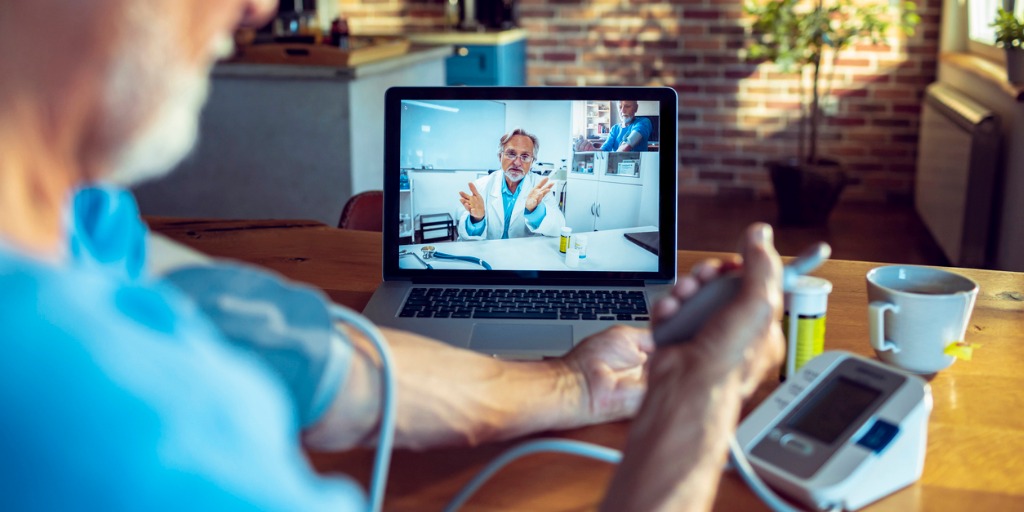7 tips to help you prepare for a virtual visit with your primary care provider
Even before the pandemic, virtual care and telemedicine were great ways to see a doctor without having to leave the comfort of home. Now, these virtual visits provide peace of mind to patients who may be at greater risk of COVID-19 complications. They also make it easier for remote workers to fit a doctors’ appointment into their busy schedules. If you’re considering virtual care or have a telemedicine appointment with your primary care provider (PCP) coming up soon—or want to educate and encourage it at your workplace or with clients—we’re sharing 7 tips to help you prepare.
For many, virtual health care technology is here to stay and has been praised for making care more convenient and accessible. While trying out a new way of seeing the doctor can feel strange at first, preparing for a telehealth visit is essentially the same as how you would prepare for an in-person appointment. You may even find it easier and more comfortable to meet with your provider virtually, especially when you keep the following tips in mind.
1. Talk to your provider
Because telemedicine is a new and growing practice, different providers may have different ways of doing things. Make sure you know ahead of time what your PCP’s individual telemedicine protocols are. Depending on the reason for your appointment, there may also be specific preparations they’d like you to make. For example:
- Is there an app you need to download to your phone, tablet, or laptop ahead of time?
- How will you fill out any necessary paperwork
.
2. Write down notes ahead of time
Like with any doctor’s visit, you’ll want to come prepared to answer questions they may have about your medical history and current medications. Writing these things down before your call will help you remember them, especially in a new, possibly stressful, situation like your first video visit. Some things to make note of include:
- Your current medications
- Your recent medical history
- Any symptoms you’ve been experiencing
- Any questions you have about your health or treatment
.
3. Check to see how your insurance will cover the appointment
Many insurers have expanded their telehealth coverage since the start of the pandemic, but it’s always a good idea to confirm coverage with your health plan. Their customer service team can also help you determine what cost sharing you might have for a virtual appointment.
4. Make sure your technology is prepared
To have a video call, you’ll need a solid internet connection. Make sure your WiFi is working and that you can connect to it without issue. If you’ll need to use an app for your video visit, download it ahead of time and create an account, if needed. Your provider may ask you to sign into the app or start the call a few minutes early to make sure your appointment can start on time.
You should also consider what type of device you’ll want to use. The larger screen on a laptop or desktop computer is good for seeing your provider clearly. But, you’ll also need to have a webcam to share your video. Using your phone or tablet can be a good choice if you’ll need to move your camera around to give your doctor a better look at a bruise, rash, or other injury. You can also consider buying a tripod stand for your phone to offer you a hands-free way to have a virtual e-visit.
5. Have some basic equipment on hand
Depending on the reason for your visit, your provider may ask you to take some measurements with equipment you might have at home. If you have a digital thermometer or a scale, keep those nearby during your appointment. Other medical equipment like a blood pressure cuff or heartrate monitor can also be helpful if you have them. If not, talk to your doctor about alternatives.
6. Find a private spot where you can communicate clearly
Because you’ll be talking to your doctor about your health and medical history, it’s important to find a place where you can feel comfortable discussing those topics. Somewhere private, like a room to yourself or even your car, can make it easier to have an open conversation with your provider.
Also think about your lighting and background noise. A quiet, well-lit spot will make communicating over video much easier. Ask your family or roommates to keep the volume down during your appointment to cut down on background. You might also consider bring in an extra light or sitting by a bright window to make it easier for your provider to see you and diagnose physical problems, if necessary.
7. Be ready to take notes
Have your notes on hand and be ready to write down things you’ll want to remember after your appointment. These might include:
- The results of any recent lab work or other tests you’ve had done
- Medications you’re being prescribed, including the name and how frequently you should take them
- Any follow-up care you’ll need or appointments you should schedule as part of your treatment
- Your provider’s health recommendations
By following these seven tips, we hope your next experience with virtual care will be a positive one.
